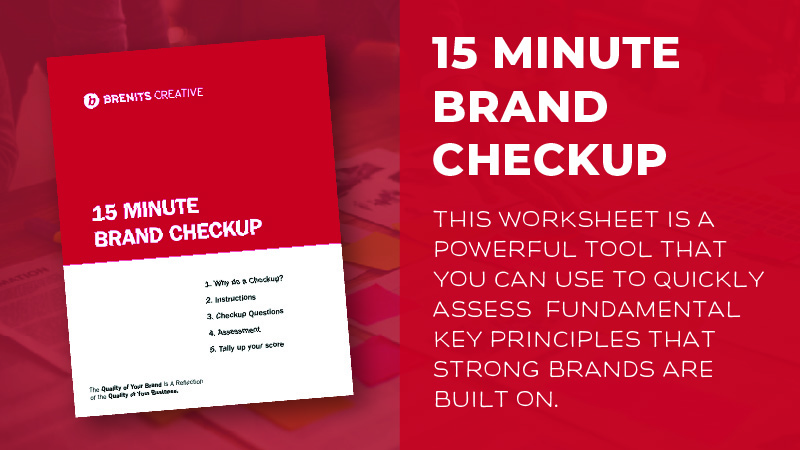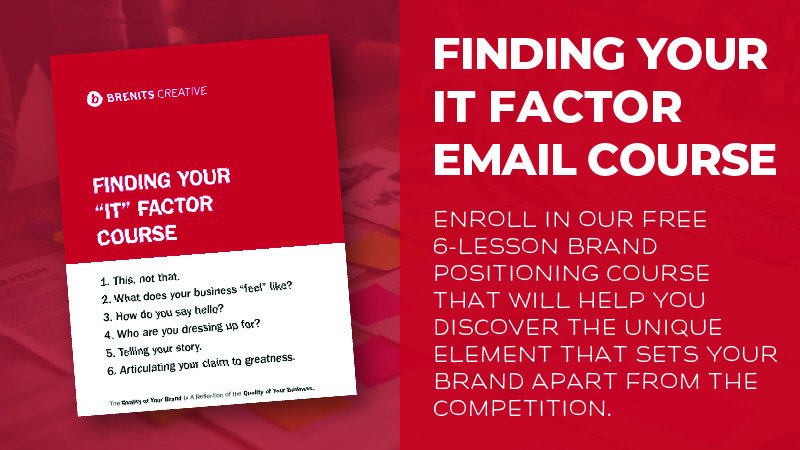Like many non-marketers, you might think that marketing is “one” thing: getting the word out about your business and influencing the “buy” decision. There are several types of marketing that a business could use to get customers to make that decision.
Marketing has evolved since the discipline first emerged shortly after World War II. In 1960, the Marketing Mix was introduced and is still primarily used today. Much of what we consider marketing to be today came about in the ’90s when the web was new. As CRM and sales data became integrated into the marketing process, analytical tools have become used to inform businesses about how and when they should reach their target audiences.
Marketing has evolved quickly since then, with many new types and sub-disciplines sprouting up. Some are more effective and relevant than others, so read on to learn about the different marketing types that exist today.
There’s no right or wrong way to do marketing — as long as it’s effective for connecting with your desired audience. Many companies use one, a few, or multiple marketing types to promote their message across campaigns and other efforts.
Ultimately, you’ll want to choose what works best for your buyers, niche, budget, and resources.
1 Traditional Marketing
Traditional marketing refers to brand promotion on any channel that has been around since before the advent of the internet. Because information wasn’t as easily accessible and readily available, most traditional marketing relied on outbound tactics such as print, television ads, and billboards.
2 Outbound Marketing
Outbound marketing refers to intrusive promotions such as print ads, TV ads, cold calling, and email blasts. This marketing method is called “outbound” since the brand is pushing their message out to all consumers to spread awareness — whether they need it or not.
3 Inbound Marketing
Inbound marketing, on the other hand, is focused on attracting customers rather than interrupting them. The majority of inbound marketing tactics fall under digital marketing. Consumers are empowered to do research online as they progress through their own buyer’s journey.
The focus for inbound is on creating valuable experiences that positively impact people and your business to pull prospects and customers to your website with relevant and helpful content. Once they arrive, you engage with them using conversational tools like email, chat, and continued value. Finally, you delight them by continuing to act as an empathetic advisor and expert.
4 Digital Marketing
Digital marketing is the opposite of traditional marketing, leveraging technology that didn’t exist traditionally to reach audiences in new ways. This type of marketing encompasses all marketing efforts that use an electronic device or the internet. Businesses leverage digital channels such as search engines, social media, email, and other websites to connect with current and prospective customers. We’ve broken some of these down in more detail below.
5 Search Engine Marketing
Search engine marketing, or SEM, includes all activities to ensure your business’s products or services are visible on search engine results pages (SERPs). When a user types in a particular keyword, SEM enables your business to appear as a top result for that search query. The two SEM types include search engine optimization (SEO) for organic search results and Pay-per-Click (PPC) advertising for sponsored SERPs.
To get started with SEO, you must familiarize yourself with search engine ranking factors and produce content for search engines to index. To get started with pay-per-click SEM, you must work with the search engine you’re looking to purchase placements. Google Ads is a popular choice.
6 Content Marketing
Content marketing is a critical instrument in inbound and digital marketing because content is what allows audiences and search engines, such as Google, to find the information they need on the web. By definition, it involves creating, publishing, and distributing content to your target audience. A content marketing program’s most common components are social media networks, blogs, visual content, and premium content assets, like tools, ebooks, or webinars.
With content marketing, the goal is to help your audience along their buyer’s journey. First, identify common FAQs and concerns your buyers have before they are ready to make a purchase. Then, create an editorial calendar to help you create and manage your content. It also helps to have a content management system to make publishing easy.
7 Social Media Marketing
Social media marketing is creating content to promote your brand and products on various social media platforms like Facebook, Instagram, LinkedIn, and Twitter. Remember your audience as you create content. No one logs on to social media looking for something to purchase, so think through what types of content are useful, informative, entertaining, and/or compelling. Your unique content should be tailored to the specific platform you share to boost your post’s reach.
To make publishing content across platforms easy, several social media tools are out there, such as that simplify the process.
8 Video Marketing
Video marketing is a type of content marketing that involves using video as a medium. The idea is to create videos and upload them to your website, YouTube, and social media to boost brand awareness, generate conversions, and close deals. Some video marketing apps even allow you to analyze, nurture, and score leads based on their activity.
9 Voice Marketing
Voice marketing is leveraging smart speakers like Amazon Alexa and Google Home to educate people and answer questions about their interest topics. Optimizing your website for voice search is very similar to optimizing for organic search. Still, beyond that, you can also get inventive by creating a Google action or Alexa skill.
10 Email Marketing
Email marketing involves sending educational or entertaining content and promotional messages to people who willingly subscribe to your receive messages from you. The primary goal is to deepen your relationship with the customer or prospect by sending marketing messages personalized to them.
Pushing that idea further, you can also use email marketing to nurture leads with content that moves them along the buyer’s journey.
Depending on your location, you must stay compliant with GDPR, the CAN-SPAM Act, and other regulations governing email.
At their core, these laws boil down to responsible commercial email sending:
- Only send to people who are expecting messages from you (i.e., they’ve opted in),
- Make it easy for them to opt-out and be transparent about who you are when you make contact.
11 Conversational Marketing
Conversational marketing is the ability to have 1:1 personal conversations across multiple channels, meeting customers how, when, and where they want. It is more than just live chat, extending to phone calls, texts, Facebook Messenger, email, Slack, etc.
12 Buzz Marketing
Buzz marketing is a viral marketing strategy that leverages creative content, interactive events, and community influencers to generate word-of-mouth marketing and anticipation for the product or service the brand is about to launch.
Buzz marketing works best when you reach out to influencers early and have a plan in place to generate suspense and perhaps even mystery.
13 Influencer Marketing
Influencer marketing taps into an existing community of engaged followers on social media. Influencers are considered experts in their niches. These individuals have an enormous influence over an audience you might be trying to reach and can be helpful marketing to those buyers.
14 Acquisition Marketing
While all marketing types are aimed at acquiring customers, most are broad in their goals (i.e., improving brand awareness or driving traffic). In contrast, acquisition marketing is laser-focused on acquiring customers.
Acquisition marketing is an umbrella type of marketing that employs other marketing tactics and strategies but focuses on how to turn those marketing benefits into revenue.
Ultimately, the focus is on lead generation from the results you get driving website traffic from inbound marketing, including content, social media, and search engine marketing. Once you have website traffic, you must turn that traffic into leads and, eventually, sales.
That’s where acquisition marketing comes in. Acquisition marketing may involve several tactics to turn a website into a lead generation engine, including offering freemium products, launching education hubs, tightening the copywriting on the site, conversion rate optimization, and lead optimization. It may even include a lead optimization and nurturing strategy to facilitate the hand-off between marketing and sales.
15 Contextual Marketing
Contextual marketing targets online users based on their online browsing behavior, with different ads on websites and social media networks. The number one way to make contextual marketing efforts powerful is through personalization.
15 Personalized Marketing
The goal here is to be thought-provoking and generate discussion so that your brand is top of mind and associated with positive sentiment.
To begin brand marketing, you need to understand your buyer persona and what resonates with them deeply. It would help if you also considered your position in the market and what makes you unique from competitors. This can help shape your values and what you stand for, giving you fodder for storytelling campaigns.
17 Brand Marketing
Brand marketing is shaping your brand’s public perception and forging an emotional connection with your target audience through storytelling, creativity, humor, and inspiration.
The goal here is to be thought-provoking and generate discussion so that your brand is top of mind and associated with positive sentiment.
To begin brand marketing, you need to understand your buyer persona and what resonates with them deeply. It would help if you also considered your position in the market and what makes you unique from competitors. This can help shape your values and what you stand for, giving you fodder for storytelling campaigns.
This is also known as brand positioning.
18 Stealth Marketing
Stealth marketing is when a brand hires actors or celebrities or uses pseudonyms to promote their product or service without consumers realizing they’re being marketed to.
Another example of stealth marketing is paying influencers to post about a product or service without disclosing that it’s actually an ad, creating fake viral videos, and product placement in movies.
19 Guerrilla Marketing
Guerrilla marketing is placing bold, creative brand activations in high-traffic physical locations to reach audiences cost-effectively, grow brand awareness, and spread the word about your brand.
Examples of guerilla marketing include altering outdoor urban environments, targeting indoor locations such as train stops, and promoting during a live event without the sponsors’ permission.
20 Native Marketing
Native marketing is when brands pay reputable publishers to collaborate in the creative process of crafting a sponsored article or video that covers one of the publisher’s main topics and looks like a regular piece of content on their website. They also pay these publishers to distribute this sponsored content to their massive audience through social media and their website.
21 Affiliate Marketing
Affiliate marketing is when an online retailer rewards a website with a commission for each customer they refer through their promotion of one of the online retailers’ products. The website, often called an affiliate, will only get paid when their promotion generates a sale.
22 Partner Marketing
Partner marketing is attracting new partners to sell your product or service to another pool of customers.
23 Product Marketing
Product marketing is bringing a product to market and driving demand for it. This includes deciding the product’s positioning and messaging, launching the product, and ensuring salespeople and customers understand its benefits and features. This is done through many of the marketing methods discussed in this article but focusing on the product rather than an organization as a whole.
24 Account-based Marketing
Account-based marketing (ABM) is a hyper-focused marketing strategy where teams treat an individual prospect or customer like its own market. Marketing teams create content, host events, and launch entire campaigns dedicated to the people associated with that account, rather than the industry as a whole. The advantage of this is having personalized campaigns for your ideal client.
25 Customer Marketing
In contrast to acquisition marketing, where the focus is on acquiring new customers, customer marketing focuses on retaining your existing customers. Keeping them happy with your product or service and customer service, and turning them into advocates for you who can spread the word about your brand.
Customer marketing relies on constant improvement of the customer experience — or the impression you leave with a customer after you’ve provided service.
26 Word of Mouth Marketing
Word-of-mouth marketing is customers’ recommendations of a brand, which is the most trusted marketing form today. To create as much word of mouth marketing as possible, you need to stay laser-focused on developing the best product or service possible and providing top-notch customer service. In other words, you need to serve your customers’ needs before your own. Only then will your customers turn into a loyal, passionate tribe that will recommend your brand to their friends and family.
27 Relationship Marketing
Relationship marketing is a type of customer marketing that focuses on cultivating deeper, more meaningful relationships with customers to ensure long-term brand loyalty. Relationship marketing is not focused on short-term wins or sales transactions. Instead, it’s focused on creating brand evangelists that become promoters for the long haul.
The key to doing this is to focus on delighting your customers who are already satisfied with your brand. Start by using customer feedback software to run a Net Promoter Score (NPS) campaign to help you find out who those customers are. Then, come up with ways to turn those happy customers into raving fans. From there, you can request that they leave a testimonial, participate in a case study, or help you achieve your customer delight goals in some other way.
28 User-generated Marketing
User-generated marketing is when businesses ask the public for ideas, information, and opinions on social media or run contests to help them craft better marketing material, like a logo, jingle, or commercial.
29 Campus Marketing
Campus Marketing is hiring college students to become campus ambassadors for your brand. They usually market your products or services to other students by setting up booths around campus or hosting giveaways.
30 Proximity Marketing
Proximity marketing is when brands use Beacons, which are Bluetooth devices that send alerts to people’s smartphones based on their proximity to one of their stores, to promote discounts to any customer who walks by one of their stores and has their app. Beacons can also pinpoint people’s locations in a store and send them deals on the products and brands that are in the same section as them.
31 Event Marketing
Event marketing is planning, organizing, and executing an event for the purpose of promoting a brand, product, or service. Events can take place in-person or online, and companies can either host an event, attend as an exhibitor, or participate as a sponsor.
Many organizations leverage their unique experience in the industry to provide present helpful informational sessions in exchange for admission cost and the brand positioning that results after being seen by attendees as an authority on the topic. Alternatively, or in conjunction with that strategy, there may be a pitch at the end of the event to prompt interested attendees to make a purchase.
32 Experiential Marketing
Experiential marketing encompasses in-person events, experiences, and interactions that forge lasting emotional connections between a brand and its target audience. Experiential marketing takes event marketing just one step further, intending to make the experience magical for attendees, providing something they can take with them after the event is over — other than just information, of course.
33 Interactive Marketing
Interactive marketing is an innovative type of marketing where your audience can interact with engaging visuals or videos within your content. This new form of marketing unleashes your creativity and, in turn, allows you to tell more gripping stories, crowning it as one of the best ways to capture your audience’s attention. Examples of interactive marketing include immersive video and interactive infographics.
34 Global Marketing
Global marketing is focusing on the needs of potential buyers in other countries. Typically, a global marketing strategy requires a business to do new market research, identify countries where the business’s product might be successful, and then localize the brand to reflect those communities’ needs.
35 Multicultural Marketing
Multicultural marketing is devising and executing a marketing campaign that targets people of different ethnicities and cultures within a brand’s overarching audience. Not only does it help you relate to and resonate with minority groups, but it also recognizes their ethnicities and cultures and helps majority groups realize that most countries are melting pots and not dominated by one main ethnicity or culture.
36 Informative Marketing
Informative marketing is a kind of marketing that refers primarily to the type of message your marketing gets across, focusing more on the facts and less on emotions. This marketing tactic highlights how your product’s features and benefits solve your customers’ problems and can even compare your product to your competitors’ product. Although this type of marketing relies on facts and figures to trigger the desired action, it’s usually framed compellingly.
37 Neuromarketing
Neuromarketing blends neuroscience and marketing to help brands gauge their current and future marketing campaigns’ emotional resonance. Companies like Immersion Neuroscience and Spark Neuro have developed technology that can measure neurochemical and physiological responses, which signal emotional engagement while consuming marketing content.
38 Persuasive Marketing
Persuasive marketing focuses more on the emotions and less on the facts. It aims to make an audience feel something, associate those emotions with a brand, and trigger the desired action.
39 Cause Marketing
Cause marketing is a type of corporate social responsibility that simultaneously improves society and boosts a brand’s awareness by promoting and supporting a charitable cause.
40 Controversial Marketing
Controversial marketing doesn’t aim to polarize an audience. It’s an attention-grabbing technique for stating an opinion. Brands use it to spark productive conversations about certain moral values.
In recent years, any stance taken on sensitive social issues can be considered controversial marketing. While you may turn off potential customers who disagree with you, your audience who agrees with you will be more committed to your brand and more likely to promote your message as it aligns with their world view.
41 Field Marketing
Field marketing is creating sales enablement content like case studies, product overviews, competitor comparisons, and more to help sales close their prospects into customers during the last stage of the buyer’s journey.






